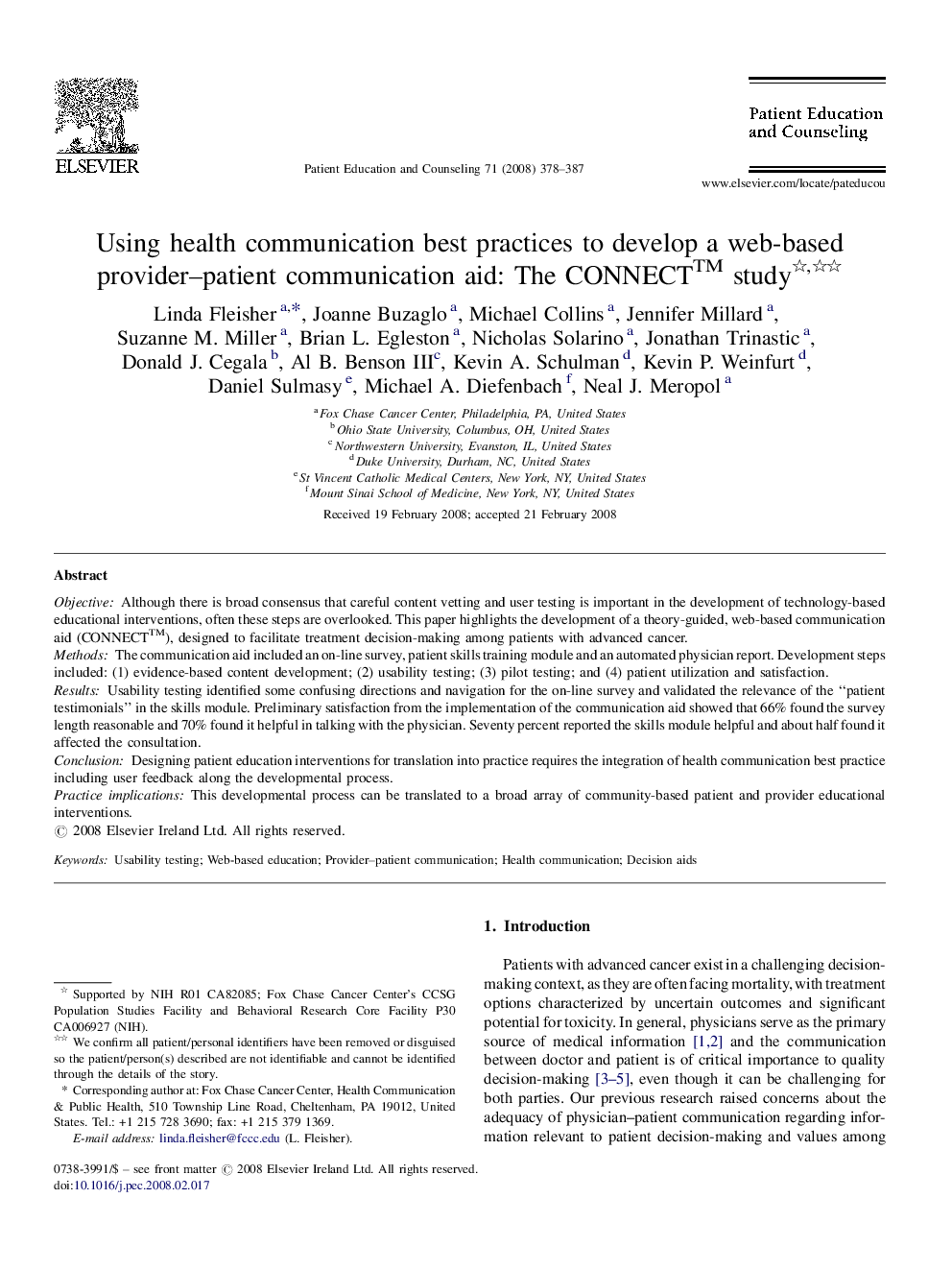| Article ID | Journal | Published Year | Pages | File Type |
|---|---|---|---|---|
| 3815991 | Patient Education and Counseling | 2008 | 10 Pages |
ObjectiveAlthough there is broad consensus that careful content vetting and user testing is important in the development of technology-based educational interventions, often these steps are overlooked. This paper highlights the development of a theory-guided, web-based communication aid (CONNECT™), designed to facilitate treatment decision-making among patients with advanced cancer.MethodsThe communication aid included an on-line survey, patient skills training module and an automated physician report. Development steps included: (1) evidence-based content development; (2) usability testing; (3) pilot testing; and (4) patient utilization and satisfaction.ResultsUsability testing identified some confusing directions and navigation for the on-line survey and validated the relevance of the “patient testimonials” in the skills module. Preliminary satisfaction from the implementation of the communication aid showed that 66% found the survey length reasonable and 70% found it helpful in talking with the physician. Seventy percent reported the skills module helpful and about half found it affected the consultation.ConclusionDesigning patient education interventions for translation into practice requires the integration of health communication best practice including user feedback along the developmental process.Practice implicationsThis developmental process can be translated to a broad array of community-based patient and provider educational interventions.
